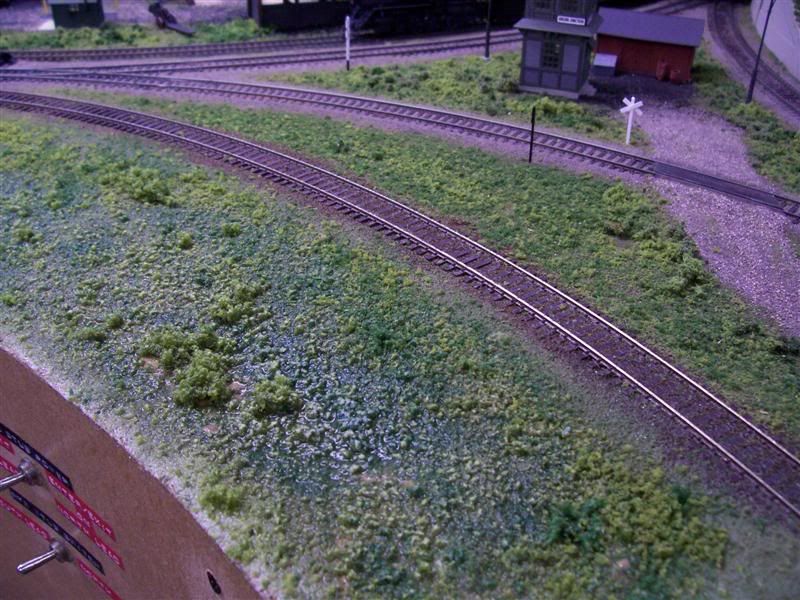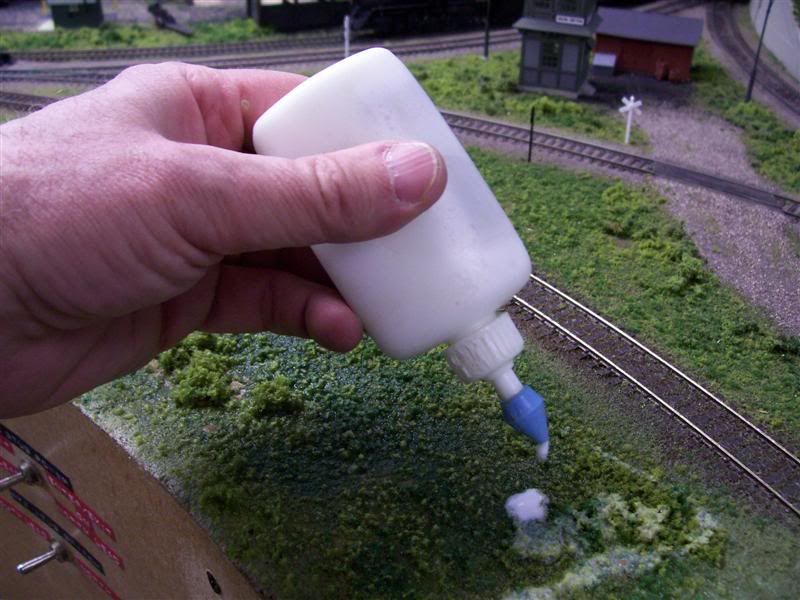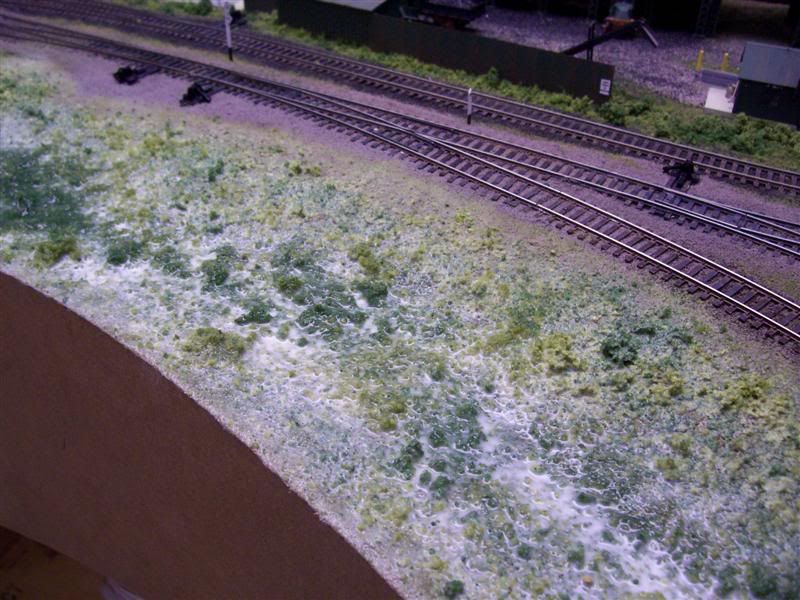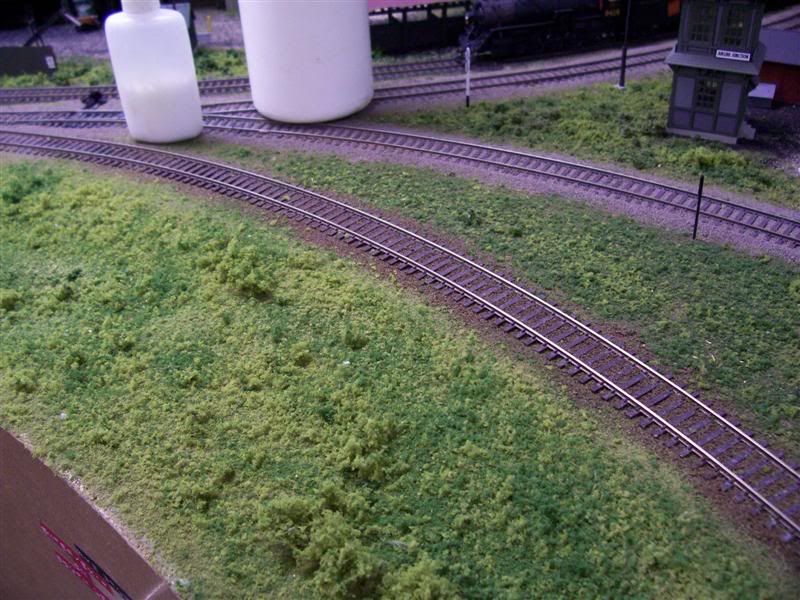First, apply and arrange all of your ground cover (ground foam, ballast, dirt, whatever - use at least 2 or 3 different shades of ground foam, unless you're creating a lawn or field of a single crop. Even then, adding a little lighter coloured material atop the darker stuff will impart "sunlit" highlights.) You can make it as thick as required - I have areas where the ballast and ground cover is over 1" deep in some areas (the result of poor planning when building the original plaster terrain).


ops: Make sure that everything is where you want it, as touching the area after you've wet it will make a mess.
I use "wet" water (tap water with a few drops of liquid dish detergent added - you can also use alcohol as a wetting agent with the water, but with all but the hardest water, the detergent works fine. I prefer to save the alcohol for a celebratory drink after the scenic work is completed.)

:mrgreen: First
thoroughly wet the area, using a good-quality sprayer that will give you a fine mist. Aim the first few spritzes upwards, letting the droplets merely fall onto the area. Spraying directly at the area will blow the foam all of the place. Once the area has been dampened, you can spray it directly.
And I do mean wet the area thoroughly!
Now, you can apply your glue mixture. Some modellers prefer matte medium over white glue, but, having used both, I prefer white glue. Used properly, the results are the same in both appearance and performance. The difference is in the price: roughly $10.00 for 8 ounces of matte medium versus about $18.00 for a gallon of white glue. In either case, mix you choice with hot water from the tap (hot water makes for faster mixing)

in about a 50/50 mix - 60/40 or 40/60 works well, too, so there's no need to be too fussy. I use a plastic dropper bottle (source unknown) to apply the dilute glue mixture - it applies drops when inverted, and even more drops if squeezed slightly. Many use an eye-dropper, which will also work, but it requires constant re-filling. Don't skimp on the glue application - you need to apply enough so that it penetrates down through your scenic materials and right to the base (plaster, extruded foam, or whatever) on which the scenery lies. The wet water which you applied earlier enables this process. If your glue mixture causes the foam to "ball up", you haven't wet the area thoroughly. The glue should be drawn right into the foam as soon as it touches.
Don't be alarmed when the ground foam appears to "wilt" under the glue application, either, as it will spring back as it dries:
Drying time will vary, depending mostly on the depth of the material applied, sometimes taking up to several days. Once dried though, the material should look as if it's loose, but be bonded firmly to your layout or diorama. Mine will withstand direct vacuuming with a shop vac.
Wayne






